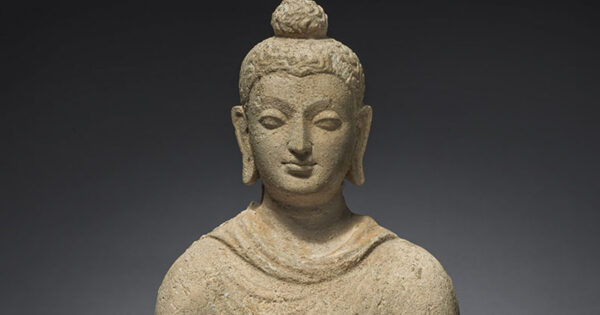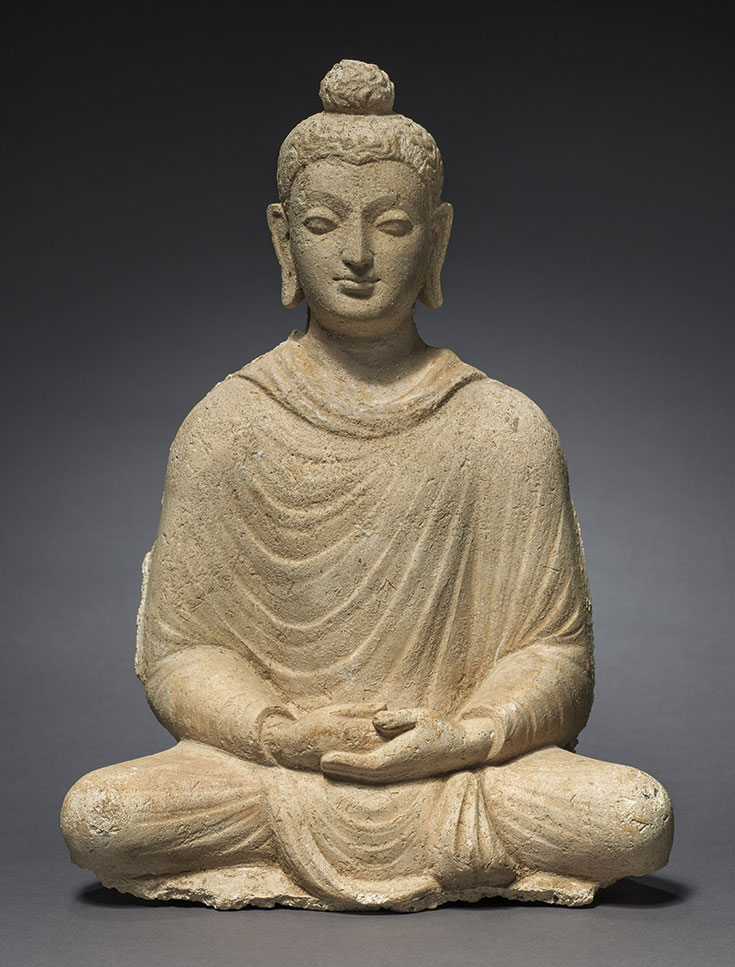All You Need Is Breath
The Buddha taught mindfulness of breathing as a complete approach to awakening. Buddhist teacher Shaila Catherine outlines his 16-step breath practice that guides us to liberation. The post All You Need Is Breath appeared first on Lion's Roar.

The Buddha taught mindfulness of breathing as a complete approach to awakening. Buddhist teacher Shaila Catherine outlines his 16-step breath practice that guides us to liberation.
I have been fond of mindfulness of breathing since I began meditating in the early 1980s. The breath offers meditators a versatile meditation subject based on the ordinary, accessible experience of breathing in and breathing out. It can be used in conjunction with a wide variety of practices to steer attention away from distractions and anchor attention on a present experience.
Observing the breath is a portable vehicle for developing mindfulness, calmness, and deep understanding.
Mindfulness of breath is a simple method to extricate our attention from proliferating thoughts about daily activities, obsessive plans for personal projects, and agitating reactions to the barrage of sensory and social encounters that occur every day. By observing the experience of breath, habitual attraction toward sensual thrills quickly subsides and the mind becomes still, refreshed, tranquil, and equanimous. Observing the breath is a portable vehicle for developing mindfulness, calmness, and deep understanding.
Although meditators before the Buddha engaged in various kinds of breath control practices, the Buddha taught a uniquely effective practice of mindfulness of breathing as a complete approach to awakening. Since the Buddha himself enjoyed practicing mindfulness of breathing, this practice is sometimes called the “Tathagatha’s dwelling.”
The Buddha’s practice of mindfulness of the breath does not require extraordinary zeal or physical strength, nor does one need advanced education or ritual blessing. It is recommended for both beginners and accomplished meditators. By skillfully utilizing the natural breath, any person, monastic or lay, can realize the fruit of awakening. The broad appeal and availability of this practice is breathtaking!
The Buddha’s teachings in the Discourse on Mindfulness of Breathing, the Anapanasati Sutta, include a set of sixteen step-by-step instructions that together map a comprehensive, joyful, and liberating path. Anapana is the Pali word for breathing; sati is the word for mindfulness. Anapanasati is widely considered to be one of the most important meditation subjects taught in the early discourses of the Buddha.
The opening section of the Anapanasati Sutta sets the stage for this important teaching. It begins with a gathering of well-known and highly respected disciples of the Buddha, each of whom were themselves guiding newer monastics. Instructions given to this audience of great teachers and new monastics would ensure the broad dissemination of the teachings.
The Anapanasati Sutta, along with teachings in the collection called the Anapanasati Samyutta and the instructions given to the Buddha’s young son Rahula in The Greater Discourse of Advice to Rahula, declares that the cultivation and development of mindfulness of breathing will be “of great fruit and benefit.” The entire path of training, from the dispelling of hindrances to the realization of nibbana (Sanskrit: nirvana), can unfold around skillful attention to breath.
Breath is a versatile meditation subject that can be recognized through different sensory or mental signs. This versatility offers practitioners a range of skillful methods for cultivating concentration and insight. You can:
Cultivate mindfulness of the body by noticing tangible sensations caused by movement, or by the touch of each breath. Settle your attention by knowing the breath as a whole or that the breathing process is occurring. Discern the conditions of the body, feelings, mind, consciousness, and causality while attending to the breath as the foundation of this practice. Contemplate impermanence and death by recognizing the changing nature of breathing. Develop deep concentration and attain the four states of meditative absorption called the jhanas through a refined mental sign of breath (patibagha nimitta).The Sixteen-Step Training
The Anapanasati Sutta presents a comprehensive sixteen-step training sequence that is organized into four tetrads. The steps guide meditators to strengthen concentration, recognize the qualities and functions of the meditating mind, contemplate the impermanence of all experiences, and incline toward the peace of release.
After establishing the preliminary conditions by going to a secluded place, settling the body in a meditative posture, dispelling the hindrances, and cultivating mindfulness and clear comprehension, the meditator takes up the meditation subject of the breath. The first three tetrads explore and develop mindfulness and concentration, and then the fourth tetrad develops insight through contemplating phenomena as not permanent. This contemplation exposes the impermanence of the wholesome states that were just developed and sees them as fleeting events that cannot be clung to.
The first tetrad corresponds with mindfulness of the body and refines the meditation object—breath. Beginning with “breathing in long, one knows: ‘I breathe in long,’” the first four instructions emphasize skillful attention by knowing the long and short breath, experiencing the whole body (of breath), and tranquilizing the bodily formations. In this tetrad, you can learn a variety of ways to attend to the breath and discover how to know breath so that the perception produces calmness, clarity, and the conditions conducive to concentration and insight.
The second tetrad recognizes and strengthens the wholesome qualities that develop in conjunction with mindfulness, such as joy, pleasure, volition, and attention. As you focus on these qualities, you can come to understand how feeling functions, allow joy to refresh interest in the breath, recognize the powerful role volition plays in directing attention, and tranquilize mental activities.
The practice of mindfulness of the breath gradually exposes all areas where attachments might fester—to the body or meditation object, mental functions, mind, or insight knowledge.
The third tetrad spotlights the mind’s clarity, purity, and readiness for deep concentration. The experience of the mind at this stage will reveal a remarkable absence of hindrances. Having directly seen the profound purity of your well developed mind, you can confidently let go of excessive effort, attachment to spiritual gains, or the habitual tendency to manipulate the meditative process. The stability, gladness, and confidence that is evident at this stage of practice matures as the mind inclines toward deep concentration and temporary liberation from obstructive states.
After refining the wholesome conditions of mind, the meditator progresses in the fourth tetrad to contemplate the arising and passing of mental and material conditions. When the perception of impermanence is vivid, you see everything with dispassion. This dispassionate attention leads to the cessation of craving and manifests in letting go, because once you have seen the impermanence of any experience of body and mind, you will clearly realize that nothing can be clung to. And, by keeping the breath at the center of the training, you will be reminded that the liberation of mind through not-clinging is available in this very life, while breathing in and breathing out.
These sixteen instructions form a meditative framework that describes the natural trajectory of mindfulness of breathing and points directly toward the goal of liberation. Specific facets of meditative experience are highlighted with each of the instructions. Working with each step, you learn to meet the breath in ways that refine, purify, and tranquilize the mind as the conditions mature that will enable the liberating experience of letting go. The sixteen-step sequence can accelerate the deepening of concentration, guide the mind into the absorption states of jhana, and incline the mind toward release.
These steps, which appear to provide specific and clearly articulated instructions, might read as a formulaic “how to meditate” guide. However, a number of teachers with whom I have studied have interpreted these instructions in remarkably different ways. Some teachers encourage attaining four jhanas before practicing insight. Others make the contemplation of impermanence the primary focus, highlight the development of the awakening factors, or favor a nuanced analysis of body and mind. As a meditation object, the breath may be perceived through a touch sensation, as a mental sign, as sensations throughout the whole body, or as a general experience. A wide variety of ways of cultivating mindfulness of breathing can successfully establish the conditions for concentration and liberating insight.
The different ways that the rich teachings on mindfulness of breathing are interpreted and practiced may reflect the unique dispositions, aptitudes, and aims of different teachers and practitioners. Over decades of meditation practice, I too have evolved my own interpretation and approach to these steps. You can feel empowered to monitor your own practice as you explore and adjust your approach to effectively cultivate sustained mindfulness, balanced energy, and conducive conditions for concentration, insight, and awakening.
The practice of mindfulness of the breath gradually exposes all areas where attachments might fester—to the body or meditation object, mental functions, mind, or insight knowledge. As such, anapanasati practice is said to fulfill the satipatthanas, the four foundations of mindfulness—mindfulness of body, feelings, mind states, and phenomena—and cultivate the seven factors of awakening.
As the Buddha declared in the Anapanasati Sutta, “When mindfulness of breathing is developed and cultivated, it fulfills the four foundations of mindfulness. When the four foundations of mindfulness are developed and cultivated, they fulfill the seven factors of enlightenment. When the seven factors of enlightenment are developed and cultivated, they fulfill true knowledge and deliverance.” The Buddha’s teachings on mindfulness of breath offer a comprehensive meditative path that develops a calm and undistracted mind, cultivates liberating insight, and culminates in awakening—all while simply breathing in and breathing out.

 Hollif
Hollif 

































